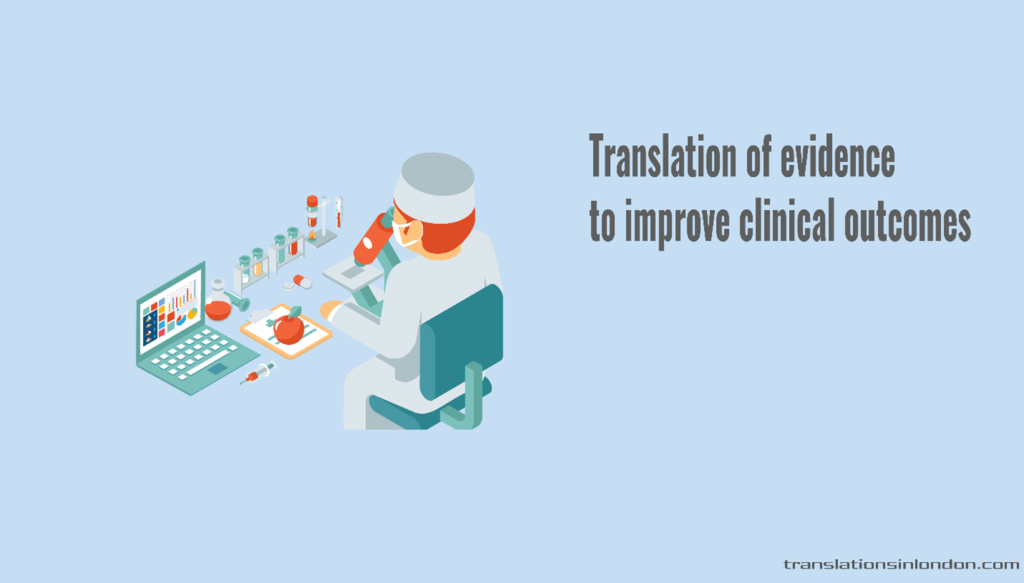The pandemic was the ultimate reminder of why modern medicine and healthcare systems need to keep evolving, and this is not just limited to a specific region. It is more of a global affair, and all countries must be stakeholders.

A primary driver towards the evolution of healthcare is the adoption of evidence-based practice between healthcare providers and patients, and this should not be a one-time thing but rather an ongoing practice amongst all players.
In this post, we take a look at how evidence can improve clinical outcomes and the role language translation plays in all of these.
What is evidence-based practice in healthcare?
Before we delve further into this post, let us clearly define what evidence-based healthcare practice is all about. Evidence-based practice (EBP) involves adopting the best available evidence to make decisions concerning a patient’s healthcare.
In EBP, the best evidence from research in conjunction with the healthcare provider’s clinical expertise and the peculiarity of the patient’s condition are all put together, all in a bid to spark innovation in healthcare, improve clinical outcomes, and also eliminate flaws from the medical practice.
While you may be wondering where the best evidence comes from or what constitutes the “best current evidence”, they primarily include; scientific research findings and principles, patient case reports, and randomized clinical trials. These are some of the elementary sources of evidence which health professions can use as the basis of clinical treatments.
The importance of evidence translation?
Translation of evidence can be viewed from two different perspectives. The first is from the transfer of knowledge perspective, where all the evidence sources earlier mentioned are precisely captured and validated before implementation.
The second perspective is from the globalization (our area of interest) point of view, where research findings and other relevant evidence from around the globe are translated from the source language to the language that requires its use.
A typical example of this is with respect to the Covid-19 research taking place around the world in various languages. Evidence from some of these findings can help to increase the chances of survival of patients, but they require proper translation to overcome language barriers in healthcare.
The role of LSP’s in the translation of evidence
Language service providers play a vital role in overcoming language barriers in healthcare, especially due to the sensitive nature of evidence found in medical-related translation, since there is no margin whatsoever for errors. They usually utilize individuals who are certified and have some form of background knowledge in the medical field in order to guarantee the accuracy these evidence documents deserve.
LSP’s also adopt various methods to carry out medical translation, which starts from understanding the communication context and nuances to establishing the relationship among texts and the written communication to the final proofreading and editing process. This meticulous procedure just shows how sensitive medical translation is.
Conclusion
Evidence-based practice clearly offers a more efficient and reliable way of improving clinical outcomes, especially during these trying times. As research findings of some of this evidence keep on occurring globally, healthcare professionals would keep on requiring the services of language services providers to assist them in overcoming language barriers as they attempt to improve upon healthcare delivery.
The language service providers at Translationsinlondon deliver top-of-the-line medical translation services to ensure that no stone is left unturned for healthcare practitioners to provide better healthcare services to patients.